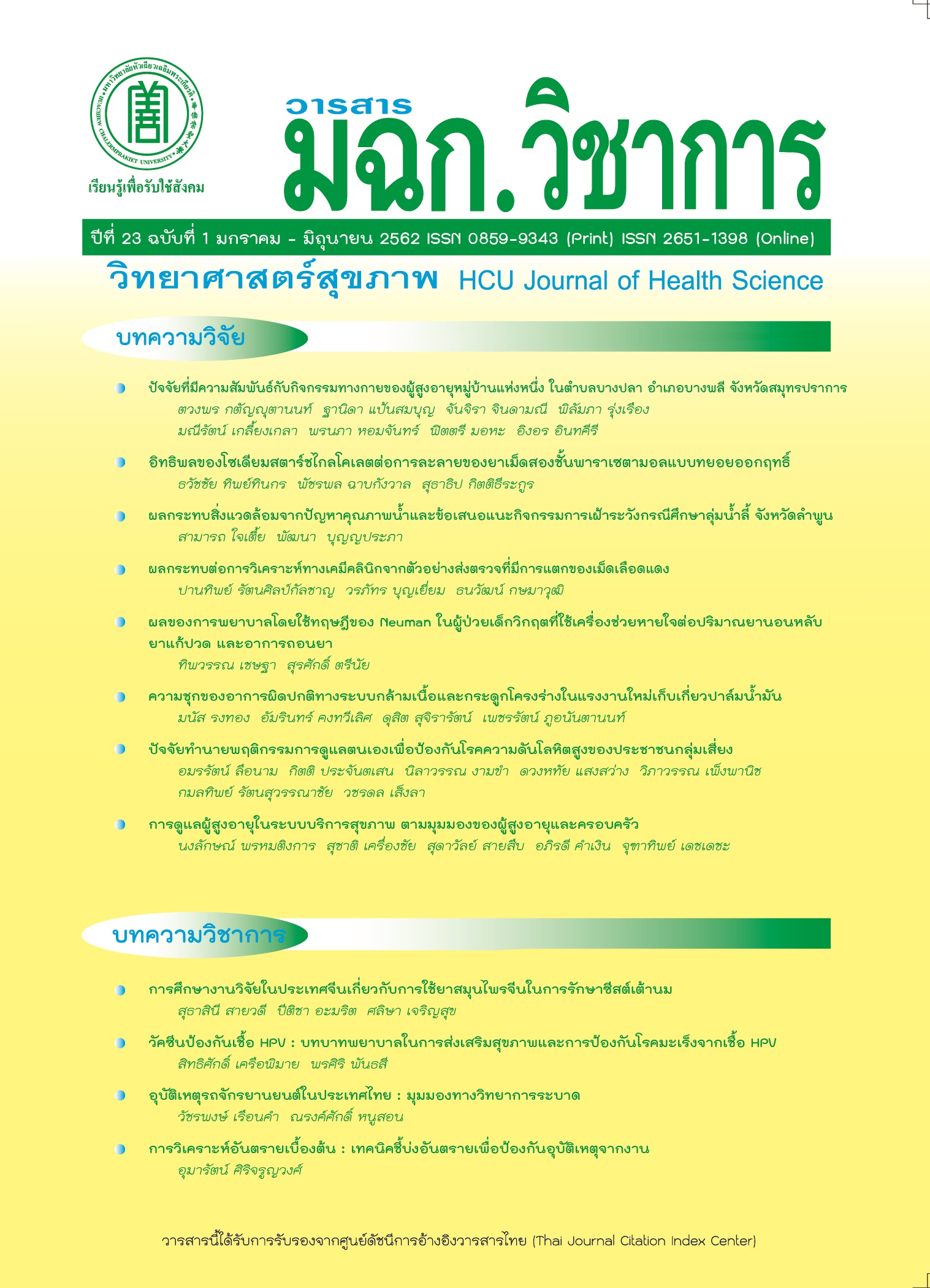The effect of hemolytic contamination in sample on clinical chemistry analysis
Keywords:
Clinical chemistry, HemolysisAbstract
This study aimed to examine the effect of hemolysis on clinical chemistry analysis. Blood samples were obtained from 30 healthy volunteers in the age range of 20-60 years. Non-hemolyzed plasma was separated from whole blood by centrifugation. Hemolysis was simulated in samples by adding their own hemolysate to their non-hemolyzed plasma to make the final concentration of hemoglobin at 0.9 mg/mL, 1.8 mg/mL, 3.5 mg/mL and 6.7 mg/mL. These samples can be classified as 1+, 2+, 3+ and 4+ hemolysis samples respectively. Subsequently, all samples were analyzed for the following 14 parameters: glucose, BUN, creatinine, uric acid, total cholesterol, triglyceride, HDL-cholesterol, LDL-cholesterol, total protein, albumin, total bilirubin, direct bilirubin, AST and ALT using an automatic analyzer. Clinical chemistry analysis showed that different hemolysis levels appear to significantly increase the level of certain tests. Accordingly, hemolysis 1+ affected direct bilirubin level (p<0.05). Hemolysis 2+ affected total bilirubin and AST level (p<0.05). Hemolysis 4+ affected glucose, uric acid, ALT and total protein level (p<0.05). However, hemolysis did not significantly affect to the results of BUN, total cholesterol, triglyceride, HDL-cholesterol, LDL-cholesterol, albumin and creatinine level. In conclusion, these results suggest that different levels of hemolysis may affect different chemical analytic parameters. Considering these results, hemolysis level may be an important factor to prevent unnecessary rejection.
Downloads
References
2. Sol F.Green. “The cost of poor blood specimen quality and errors in preanalytical processes” Clin Biochem, 46;1175-1179, 2013.
3. Sysmex-europe.com [Internet]. SLS DETECTION METHOD [cited 2016 october 30]. Available from: https://www.sysmex-europe.com/academy/knowledge-centre/measurement-technologies/sls-detection-method.html
4. Joseph J Frank, Edward W Bermes, Margaret J Bickel, Bruce F Watkins. Effect of in vitro hemolysis on chemical values for serum. Clin Chem, 24(11):1966-1970, 1978
5. Mehmet Koseoglu, Aysel Hur, Aysenur Atay, Serap Cuhadar. “Effects of hemolysis interference on routine biochemistry parameters” Biochemia Medica, 21(1):79-85, 2011.
6. Dogan Yucel, Klara Dalva. “Effect of In Vitro Hemolysis on 25 Common Biochemical Tests” Clin Chem. 38(4);575-577, 1992.
Downloads
Published
How to Cite
Issue
Section
License
บทความที่ได้รับการตีพิมพ์เป็นลิขสิทธิ์ของวารสารวิทยาศาสตร์สุขภาพและสุขภาวะ
ข้อความที่ปรากฏในบทความแต่ละเรื่องในวารสารวิชาการเล่มนี้เป็นความคิดเห็นส่วนตัวของผู้เขียนแต่ละท่านไม่เกี่ยวข้องกับมหาวิทยาลัยหัวเฉียวเฉลิมพระเกียรติ และคณาจารย์ท่านอื่นๆในมหาวิทยาลัยฯ แต่อย่างใด ความรับผิดชอบองค์ประกอบทั้งหมดของบทความแต่ละเรื่องเป็นของผู้เขียนแต่ละท่าน หากมีความผิดพลาดใดๆ ผู้เขียนแต่ละท่านจะรับผิดชอบบทความของตนเองแต่ผู้เดียว




